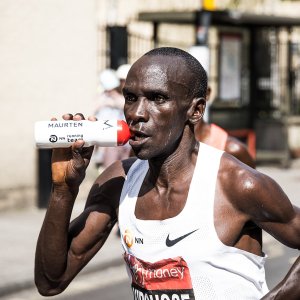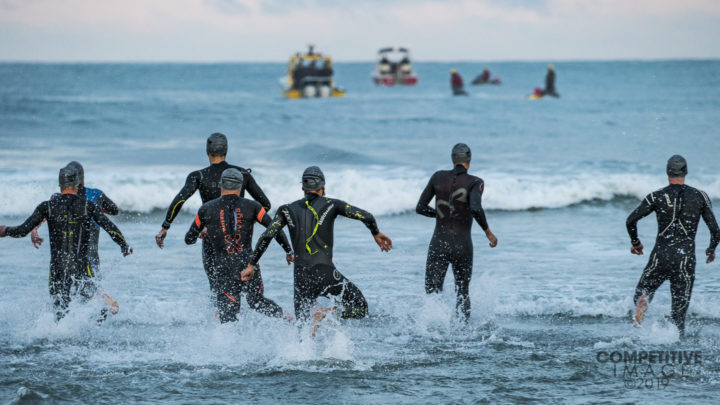As triathletes, we push our bodies to the limit, requiring optimal nutrition to fuel our performance during endurance races. Among the crucial aspects of race preparation, carbohydrate intake stands as a fundamental pillar. The ideal carbohydrate concentration plays a vital role in sustaining energy levels and enhancing performance. In this blog post, we delve into the science behind carbohydrate consumption and explore the optimal concentration for endurance racing.
Understanding Carbohydrates and Endurance Racing: Carbohydrates are the primary source of energy for endurance athletes. During prolonged exercise, the body relies on stored glycogen in the muscles and liver to maintain performance. However, glycogen stores are limited and need to be continually replenished through carbohydrate intake. Consuming carbohydrates before, during, and after a race is essential for sustaining energy levels, delaying fatigue, and improving endurance.
The Importance of Carbohydrate Concentration: Carbohydrate concentration refers to the amount of carbohydrates consumed per unit of fluid or food. It directly affects the rate at which carbohydrates are absorbed and utilized by the body during endurance racing. The optimal carbohydrate concentration ensures efficient absorption and minimizes gastrointestinal distress, both of which are crucial for peak performance. The easiest way to calculate carbohydrate concentration is to divide the amount of carbs in grams by the amount of fluid in mL, then multiply by 100. Example: 50g of carbs / 1000mL of fluid = 0.05 x 100 = 5%
Finding the Sweet Spot: The ideal carbohydrate concentration for endurance racing is generally recommended to be within the range of 6-8% for beverages and 2-8% for gels, bars, or solid foods. This range has been extensively studied and proven to maximize carbohydrate absorption and minimize the risk of gastrointestinal issues.
Factors Influencing Carbohydrate Concentration:
- Race Duration: The duration of your race plays a significant role in determining the optimal carbohydrate concentration. Shorter races lasting less than 90 minutes may require a lower concentration, while longer races call for higher concentrations to sustain energy levels throughout.
- Individual Tolerance: Every athlete’s body is unique, and individual tolerance to carbohydrates may vary. Some athletes may experience gastrointestinal distress at higher concentrations, while others may be able to handle higher levels without any issues. Experimentation during training is key to finding your optimal carbohydrate concentration.
- Environmental Conditions: Environmental factors such as heat and humidity can impact carbohydrate absorption. In hot and humid conditions, it is generally recommended to lower the carbohydrate concentration to facilitate better fluid absorption and prevent dehydration.
Experimentation and Practice: Discovering the ideal carbohydrate concentration for your body requires experimentation and practice during training sessions. It is essential to test different concentrations, fluids, and foods to identify what works best for you. Remember to consider your individual tolerance, race duration, and environmental conditions when fine-tuning your carbohydrate intake strategy.
Personally, I find that mixing my nutrition bottles to be 10% CHO concentration, and supplementing with electrolyte water based on conditions and duration of the event, works for me in most scenarios. I use 750ml bottles and add 75g of CHO to get that mix dialed. I also supplement with gels to bring up my CHO intake per hour, again using on course water to dilute the concentration. I try to take in 100g of CHO per hour on the bike, and closer to 60g of CHO on the run. Again, this is all highly personal and can change depending on what products you use, the conditions, and other factors such as hydration and sweat rate. It’s always best to test these things in training!
Carbohydrate Periodization: In addition to concentration, carbohydrate periodization is a technique that can enhance endurance performance. By strategically manipulating carbohydrate intake during training, you can improve your body’s ability to utilize and store glycogen, thereby maximizing performance on race day. Working with a qualified sports nutritionist or coach can help you develop a personalized carbohydrate periodization plan.
Exogenous Ketones: Another factor to consider, products like Ketone IQ from HVMN can be beneficial to endurance performance. That’s a topic for a future post, but in the meantime you can find more information here: HVMN The Science
Conclusion: Optimizing carbohydrate intake is a key component of successful endurance racing. By understanding and implementing the ideal carbohydrate concentration, triathletes can sustain energy levels, delay fatigue, and ultimately perform at their best. Remember that finding the perfect concentration requires experimentation, practice, and consideration of individual factors. With the right approach to carbohydrate intake, you’ll be one step closer to reaching your triathlon goals and unlocking your full potential as an endurance athlete. If you have any questions, don’t hesitate to reach out!
PB





